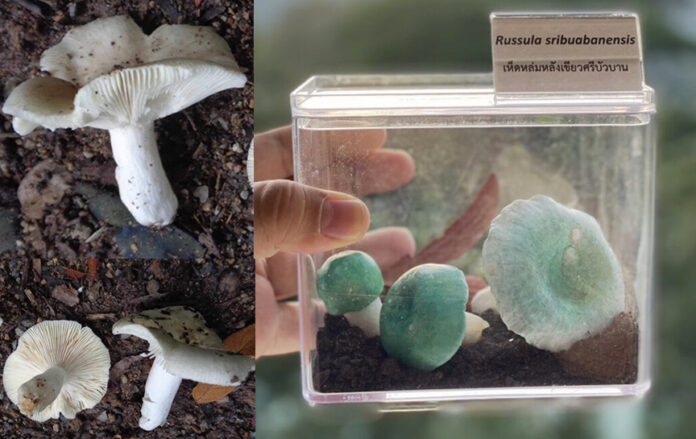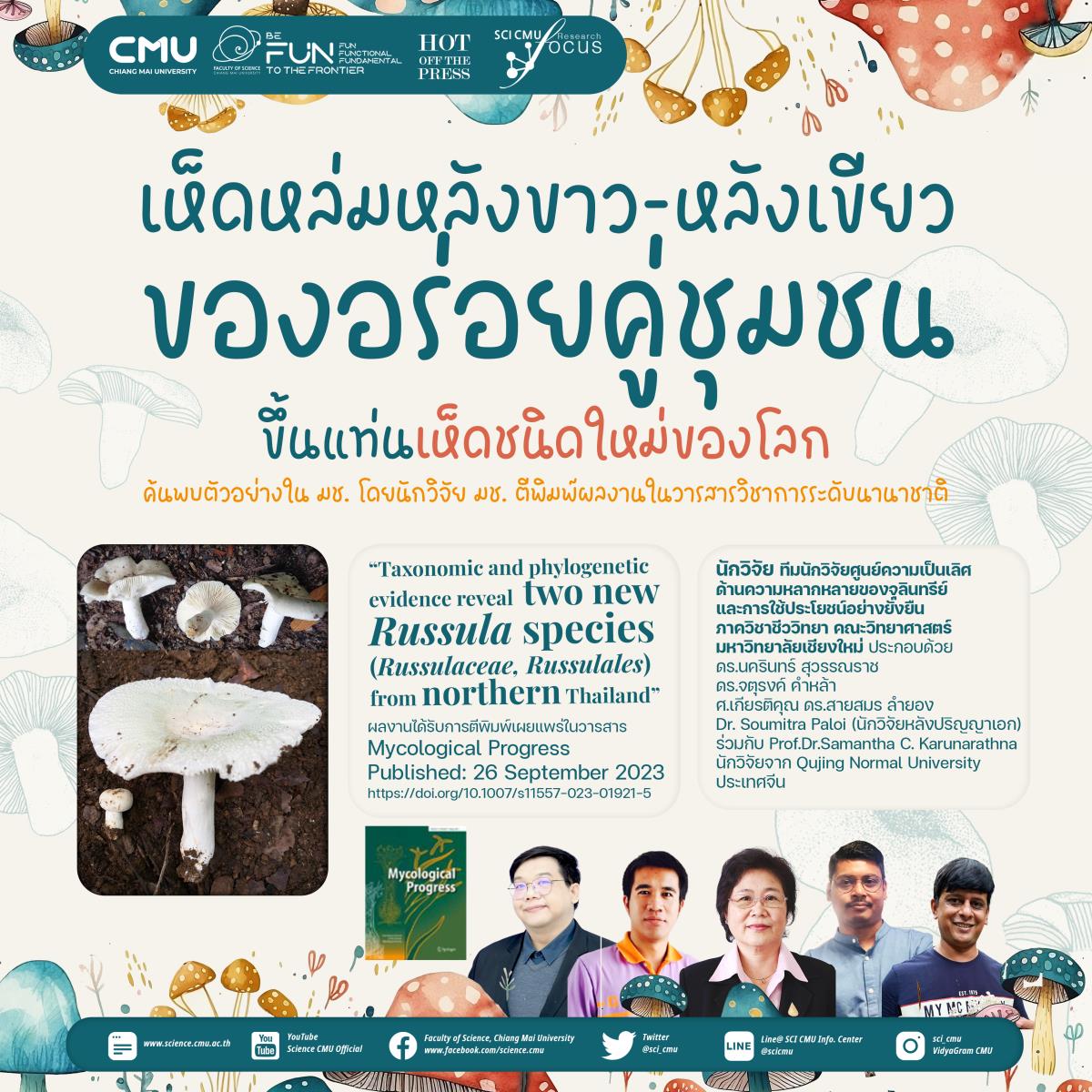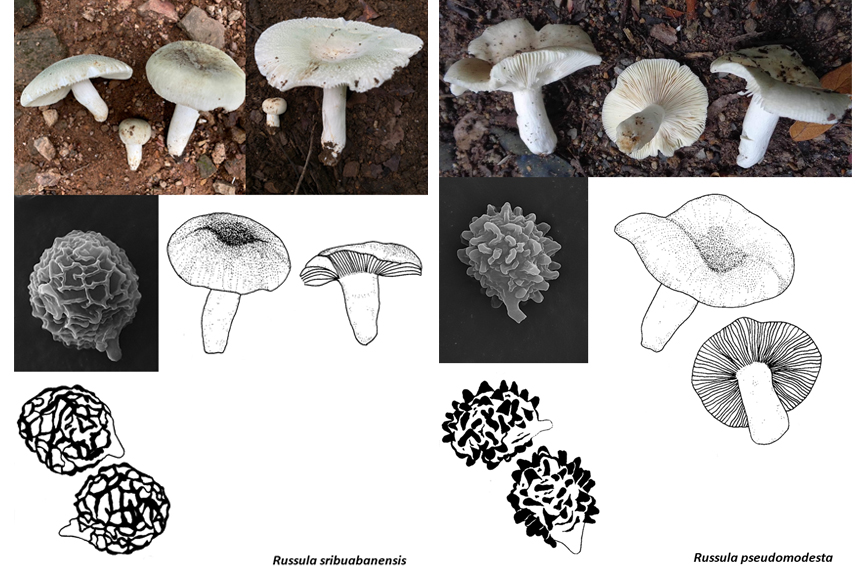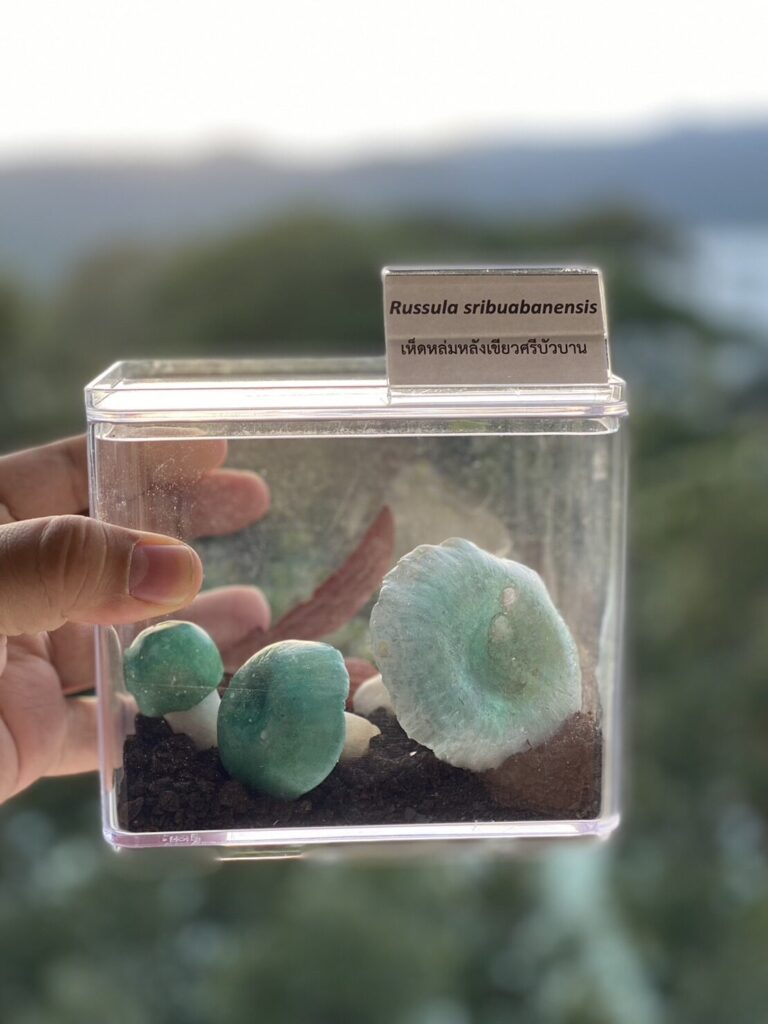
CHIANG MAI – Russula pseudomodesta and Russula sribuabanensis are edible mushrooms that have long been used as wild food, but their scientific names have not been correctly identified.
A team of researchers from the Center of Excellence for Microbial Diversity and Sustainable Utilization, Department of Biology, Faculty of Science, Chiang Mai University, has discovered these two new Russula species (Russulaceae, Russulales) from northern Thailand.
The researcher team was led by Dr. Nakarin Suwannarat, Dr. Jaturong Khamla, Professor Emeritus Dr. Saisamorn Lamyong, and Dr. Soumitra Paloi, in collaboration with Prof. Dr. Samantha C. Karunarathna from Qujing Normal University in China.
They studied fungi of the genus Russula, which are ectomycorrhizal fungi with Dipterocarpaceae trees, at in the University of Chiang Mai and at the protected area of the Plant Genetic Conservation Project, MOPH-CU (Chiang Mai University Educational Center “Haripunchai”, Siri Buaban Subdistrict, Lamphun Province).

The researchers used a combination of morphological and molecular methods to identify the new species. Morphological studies were carried out using high-performance microscopy and cell drawings to describe the appearance of the fungi. Molecular studies included DNA sequencing of genes involved in protein synthesis, including the RNA polymerase II (RPB2) gene, the internal transcribed spacer (ITS) gene and the large subunit (LSU) gene.
The results of the study showed that the two new species are distinct from other known species of Russula. They are also edible and have a distinctive aroma. Preliminary studies suggest that they may also have medicinal properties.


Russula pseudomodesta is found in the forest at the Chiang Mai University campus, while Russula sribuabanensis is found in a protected area near the Siri Buaban village in Lamphun province. Both species are found in mixed deciduous forests that are home to a variety of other plant and animal species.
The research findings are in line with the following Sustainable Development Goals (SDGs): SDG 1: No poverty – Wild mushrooms can provide a source of income for local communities, helping to alleviate poverty, SDG 2: Zero hunger – Wild mushrooms can be a source of food, providing a source of protein and other nutrients.
The research also contributes to the growing knowledge of the biodiversity of mushrooms in Thailand. The findings of the research are also significant for the local community. The two new species of mushrooms are edible and have a distinctive aroma.
They are also sold at a high price of 150-200 baht per kilogram in the rainy season. This provides a source of income for local people and helps to support the local economy.
















































